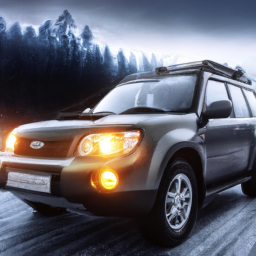
Conducting a transmission fluid pressure test on a Subaru Forester is a critical diagnostic procedure that helps determine the state of the transmission and whether it is functioning correctly. find more details on the download manual…..
- Rebuilding a 2020 Subaru Forester Sport in 10 Minutes Rebuilding a wrecked 2020 Subaru Forester Sport in 10 minutes kinda like throtl… haha. We bought this Forester from Copart auto …
- '19 Subaru Forester: Front Brake Job – OEM Parts Doing a simple front brake job on a 2019 Subaru Forester using OEM parts. Napa screwed me out of the parts I ordered from them …
Below is a detailed guide on how to perform this test, including a description of the necessary components.
### Components Needed:
1. **Transmission Pressure Gauge Kit**: This is the primary tool for measuring the fluid pressure. The kit typically includes:
– Pressure gauge
– Hoses
– Adapters specific to the Subaru transmission
2. **Wrenches/Sockets**: For removing and installing the transmission fluid pressure test plug, typically 10mm or 12mm, depending on the model year.
3. **Screwdriver**: To remove any necessary covers or components that may obstruct access to the test port.
4. **Shop Towels**: To clean up any spills and to keep the work area tidy.
5. **Safety Equipment**: Gloves and safety glasses to protect against hot fluids and debris.
6. **OBD-II Scanner (optional)**: For checking any diagnostic trouble codes that may be present.
7. **Container for Fluid**: To catch any fluid that may spill during the process.
### Preparing for the Test:
1. **Safety First**: Park the vehicle on a level surface. Engage the parking brake and turn off the engine. Allow the transmission to cool if it has been running.
2. **Gather Necessary Tools**: Ensure you have all the tools and equipment listed above within reach.
3. **Access the Transmission**: Depending on your Forester model, you may need to remove some underbody covers to access the transmission.
### Steps to Perform the Transmission Fluid Pressure Test:
1. **Locate the Test Port**:
– The transmission pressure test port is typically located on the transmission body. Consult the vehicle service manual for the exact location for your model year. It is usually a small bolt or fitting on the transmission case.
2. **Remove the Test Port Plug**:
– Use the appropriate wrench or socket to carefully remove the test port plug. Be cautious, as some fluid may escape when the plug is removed.
– Allow any excess fluid to drain into your container and have your shop towels ready to clean up spills.
3. **Attach the Pressure Gauge**:
– Take the pressure gauge and attach it to the test port. Ensure it is securely connected to prevent leaks. If your gauge kit includes specific adapters, use them as necessary.
– Make sure the gauge is readable and positioned where you can easily See it during the test.
4. **Start the Engine**:
– With the gauge connected, restart the engine. Allow it to idle as you prepare to perform the test.
– Make sure the transmission is in “Park” or “Neutral.”
5. **Check Fluid Pressure**:
– With the engine running, observe the pressure reading on the gauge. You may need to shift through the gears (e.g., from Park to Drive to Reverse) to check the pressure in different modes.
– Take note of the pressure readings for each gear position. Refer to the service manual for the specific pressure specifications for your Subaru Forester.
6. **Shift Through Gears**:
– Move the gear selector through each position, pausing for a few seconds in each gear to allow the pressure to stabilize. Record the readings for each gear position.
– Compare the readings to the specifications provided in the service manual. Low or erratic pressure readings may indicate issues such as a worn pump, clogged filter, or internal transmission problems.
7. **Turn Off the Engine**:
– Once you have completed the pressure test, turn off the engine and allow the transmission to cool if necessary.
and allow the transmission to cool if necessary.
8. **Remove the Pressure Gauge**:
– Carefully remove the pressure gauge from the test port and re-install the test port plug securely to prevent any fluid leaks.
– Clean any spills with your shop towels.
9. **Check Fluid Level**:
– After reassembling, check the transmission fluid level to ensure it is at the correct level. Add fluid if necessary, and ensure that the fluid is at the proper temperature before checking.
### Post-Test Actions:
– **Analyze Results**: Based on the pressure readings, you may need to take further actions, such as diagnosing specific components or replacing the transmission fluid/filter.
– **Consult a Professional**: If you are unsure about any readings or the condition of the transmission, it is advisable to consult with a professional mechanic or transmission specialist.
### Conclusion:
Performing a transmission fluid pressure test on a Subaru Forester is a straightforward process, but it requires precise execution and adherence to safety precautions. By following these steps, you can effectively determine the health of the transmission and address any potential issues before they escalate. Always refer to the vehicle’s service manual for specific specifications and additional guidance tailored to your particular model year.
A fan relay is an essential electrical component in a vehicle’s cooling system, specifically designed to control the operation of the radiator cooling fans. The primary function of the fan relay is to act as a switch that manages the flow of electrical current to the cooling fans based on the engine’s temperature and other parameters.
In modern vehicles, the engine generates a significant amount of heat during operation, and the cooling system is critical for maintaining optimal engine temperatures. The fan relay helps regulate the cooling fans, which draw air through the radiator to dissipate heat. When the engine reaches a certain temperature, or when the air conditioning system is activated, the engine control unit (ECU) sends a signal to the fan relay. This signal activates the relay, allowing electrical current to flow to the cooling fans, which then spin to cool the engine.
Fan relays can also serve multiple fan speeds, providing efficient cooling under various conditions. For instance, some vehicles have a two-speed fan system where the relay controls low and high-speed operations depending on the cooling requirements. If the fan relay fails, it can lead to overheating, as the fans may not operate when needed. Symptoms of a faulty fan relay can include the fans not turning on, running continuously, or operating erratically. Regular maintenance and prompt diagnosis of issues related to the fan relay are crucial for ensuring proper engine cooling and overall vehicle performance.